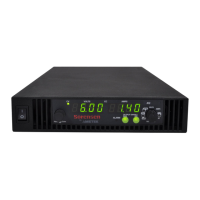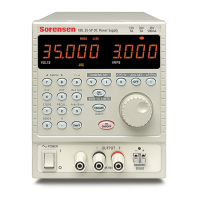SCPI Command Reference
A-4 M370430-01 Rev B
Using SCPI Commands
This Manual shows SCPI commands in the following format:
CALibration:CURRent:LEVel {<current>|MIN|MAX}
The command is expressed as a mixture of upper- and lowercase
letters. The uppercase letters suggest how the command can be
abbreviated into a short form. SCPI commands can be sent in long
or short forms. The short form is better for data entry. The long
form is better for readability.
Command strings are not case sensitive: CURR, Curr, and curr
are all acceptable abbreviations for CURRent. As for the long form,
CURRENT, Current, and current are all acceptable. It is not
possible to write for example, CALibrat: CURR: LEV because the
extra first node does not explicitly match the short or long form of
the calibration node.
The command strings include punctuation. While some
punctuation is sent with the string, other markings are used to
identify different elements of the command syntax and are not sent
with the string.
The following punctuation is sent with the command string:
Colons (:) separate command keywords from lower-level
keywords. For example, CAL : CURR: STAT.
Blank spaces separate command keywords from parameter values.
For example, CURR 0.1.
Commas separate parameters from each other when more than one
parameter is sent in the same string. For example, CAL: STAT
OFF,”1234.”
Semicolons (;) separate multiple commands from the same
subsystem. This allows for greater efficiency.
For example: CAL:CURR:LEV MIN;VOLT:LEV MIN
is the same as typing:
CAL:CURR:LEV MIN
CAL: VOLT: LEV MIN
Colons and semicolons can be used together to link commands
from different subsystems. For example:
CAL:CURR:LEV MIN;:MEAS:CURR?
The short form is made up of 3 or 4 letters. There can only be a
absolute short or long form. For example, it is not possible to write
CALibrat: CURR: LEV because the extra the first node does not
match explicitly the short or long form of the calibration node.

